Techniques of Coordination:
According to Newman, “Coordination is the orderly synchronization of efforts to provide the proper amount, timing and directing of execution, resulting in harmonious and unified action to a stated objective.”
In the words of Terry, “Coordination is the process of adjustment of parts in time so that each may make its maximum contribution to the product of the whole.”
Coordination can be effected automatically or deliberately. Automatic coordination is possible in a small-scale organization where the head of the organization personally knows and controls everybody working therein. He acts as the coordinator.
In a big organization, there are always to be found several units or sections and the span of control of each official is limited. Their coordination is to be deliberately planned or arranged. It is to be achieved through coercive or voluntary methods. Voluntary coordination should be given preference over coercive coordination. If the former fails, the latter will have to be resorted to through a common superior authority. Coercive coordination can be achieved through the organizational hierarchy. The work may be coordinated by the orders of the superior to the subordinates, teaching from the top to the bottom.
But, generally, coordination in any organization is secured voluntarily by mutual adjustments and agreements. It is sought to be secured through formal and informal methods. The former include planning, organizational machinery, hierarchy, written rules, communication, housekeeping agencies, councils, and inter-organizational committees and councils. The latter involves such devices as personal contacts, effective leadership, effective personal communication, and informal organization.
In a broad way, we can discuss the following recognized techniques of Coordination:
(1) Planning- Planning is a coordinating device. It implies the maximum utilization of resources to achieve goals. It involves an organized and planned use of men and resources for securing definite and defined objectives and goals. Thus, planning is an important method of achieving coordination. It can avoid conflicts and waste of effort and resources.
(2) Mechanism of Organizational Hierarchy- A sort of coercive coordination can be brought through the mechanism of organizational hierarchy. If there is a conflict between various departments, the common official superior gives orders and his orders are binding upon them.
(3) Through references and Consultations- The system of references and consultations is an important technique of coordination. Through references and consultations, coordination is brought about in government departments. Past records and facts are reviewed, consultations are held, clarifications are sought, clearances are secured and matters are sorted out. But this process of reference and clearance does cause delay and makes the wheels of an administration move slowly. Such delay, however, can be avoided if the circulation of numerous copies of the papers, instead of the original file is resorted to or if verbal consultations over the telephone are made.
(4) Institutional or Organizational Devices- Coordination can be achieved through institutional or organizational devices like inter-departmental committees, planning commissions, coordination officers, etc. An inter-departmental committee is often used for achieving coordination among different departments.
(5) Decentralization- It is a widely held view that decentralization facilitates coordination and avoids conflicts. Each functional activity is made independent in a decentralized administrative setup. Such a type of organization is often found in business enterprises and also in some governmental cooperations.
(6) Through Leadership- Good leadership is one of the most important techniques of coordination. Stimulating leadership encourages the workers to overcome difficulties and function in a team spirit. Under inspiring and qualitative leadership, the workers work as a team and put in their best efforts to achieve the goals. Effective and alert leadership can avoid conflicts through personal contacts and by successfully combing formalism with informalism.
(7) Centralized House-Keeping- Another important technique for bringing out coordination is centralized housekeeping. Explaining the nature of this technique, Pfiffner writes, “In administration, the housekeeping problem usually includes supply, warehousing, the cleaning, and maintenance of buildings, printing and duplication, equipment control, central mailing, transportation and food, and telephone service.” In India, there are many housekeeping agencies like the Public Works Department, the Director General of Supplies, and the U.P.S.C.
(8) Finance Department- Finance department acts as a source of coordination among different departments. It has links with each department. In preparing the budget, the finance department coordinates the resources, policies, and expenditures of the various departments, and on the basis of collected facts and figures evolves an agreed plan of action.
(9) Verbal and Written Communication- Coordination depends upon the effectiveness of verbal and written communications which channel information through the chain of command. Clear-cut and timely communication to all concerned can affect coordination in the efforts of all the personnel or units involved in the action.
(10) Regional Councils- Regional councils representing different field organizations working in different regions can also coordinate the activities of these field organizations.
(11) Informal Means of Coordination- Informal means of coordination like developing friendly contacts among one another, maintaining links, meetings in clubs, restaurants, and hotels, and attending some common functions, enable the personnel to come closer to each other. Occasional informal exchange of information and discussion can help the process of coordination.
Since coordination is the sine qua non of every organization, and because it has to be consciously secured, all these techniques can be and should be used for securing a high degree of coordination both within every organization and among various organizations.
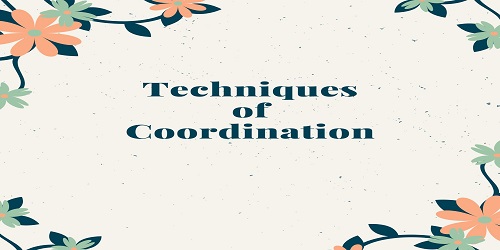

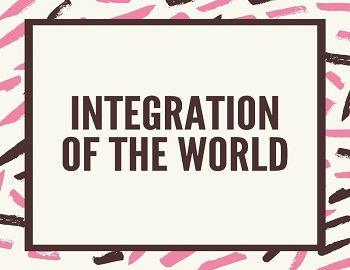


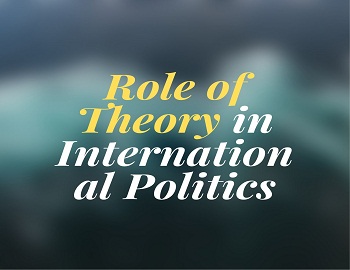
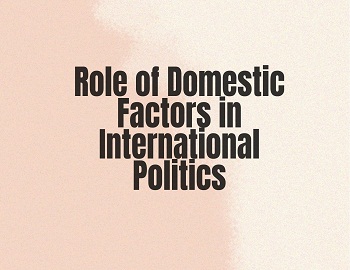

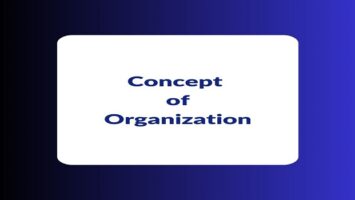
Comments (No)